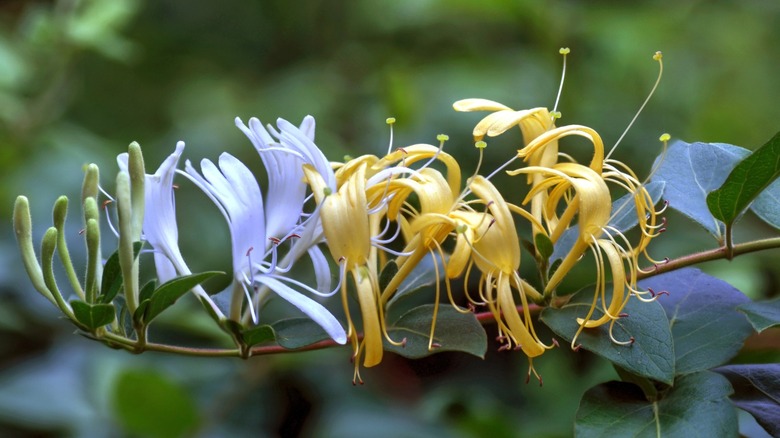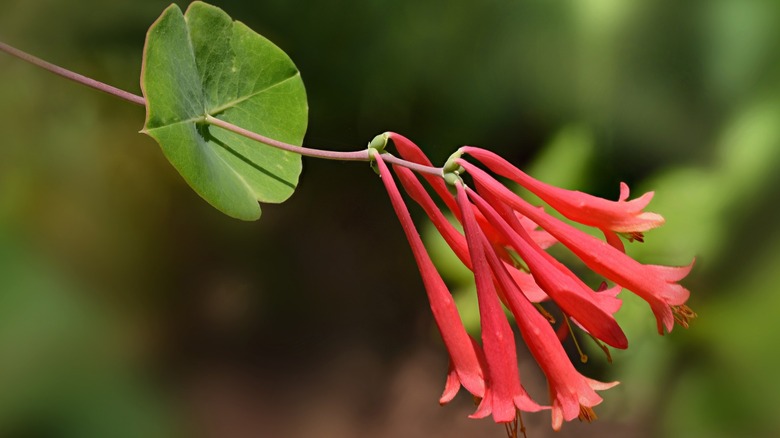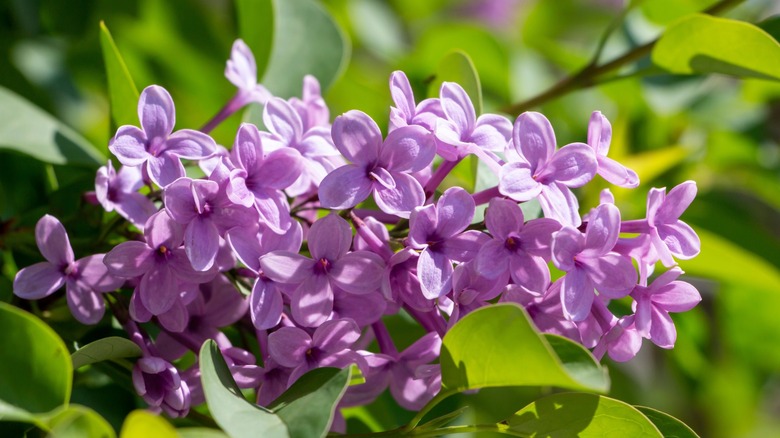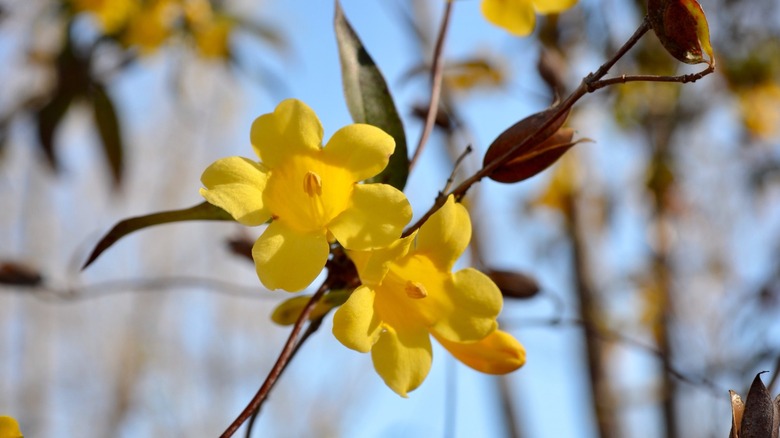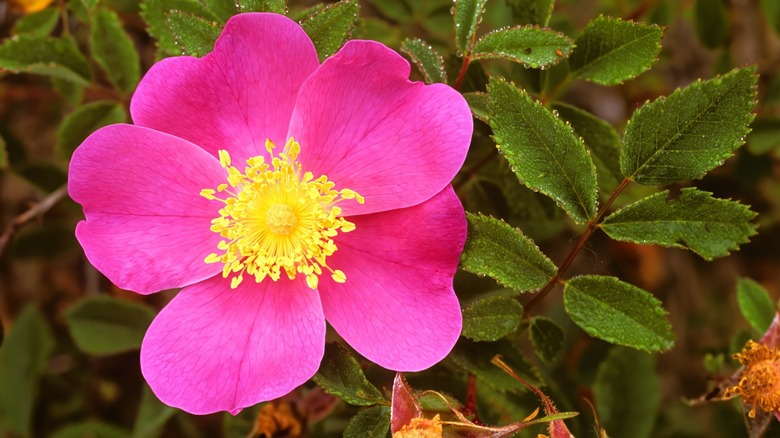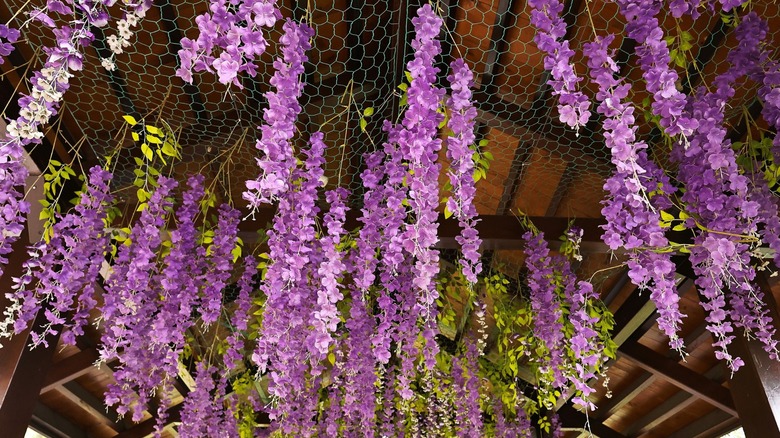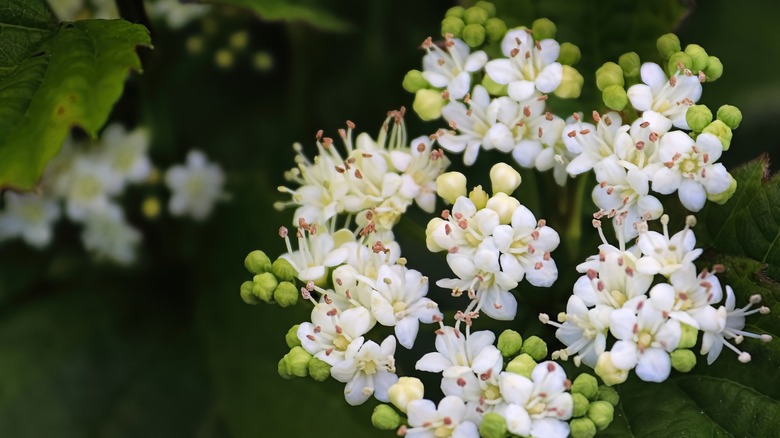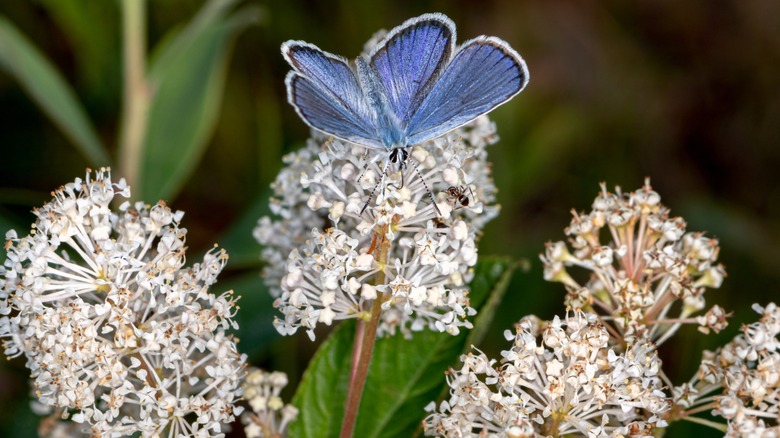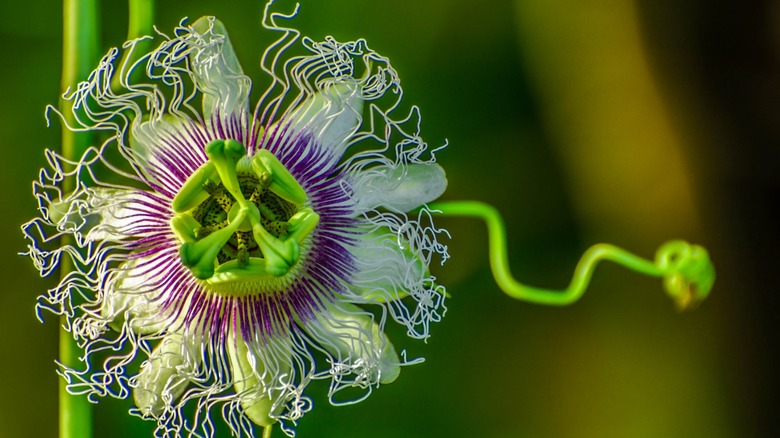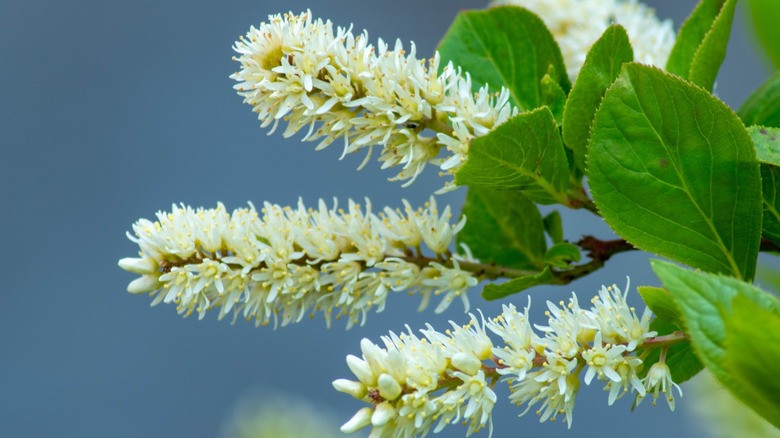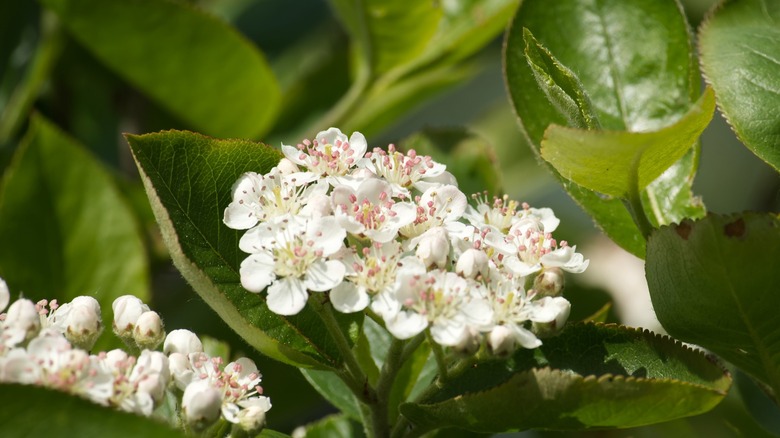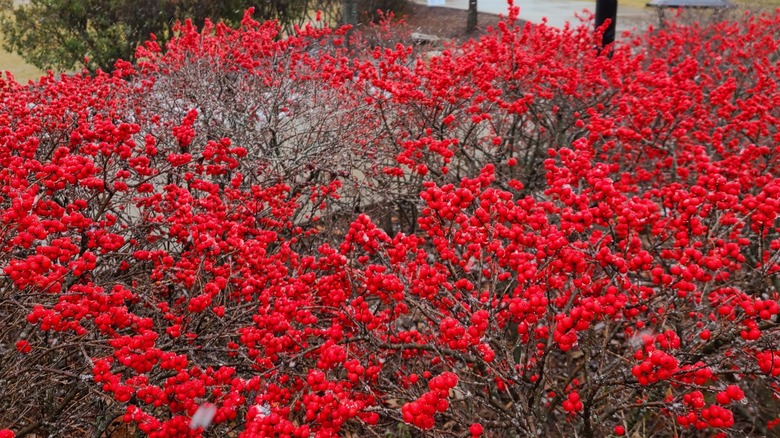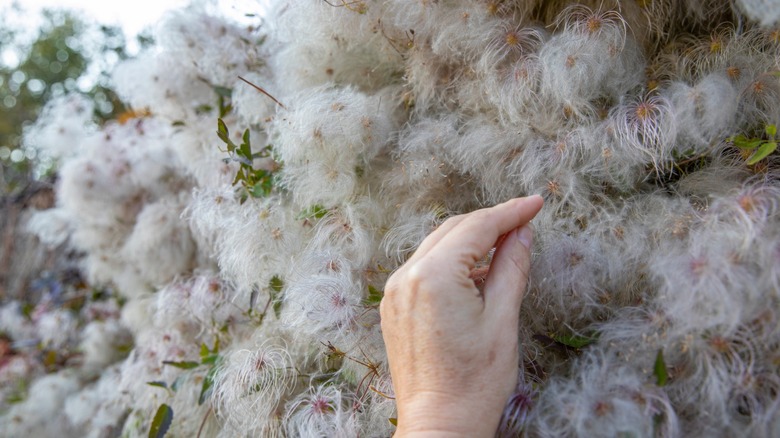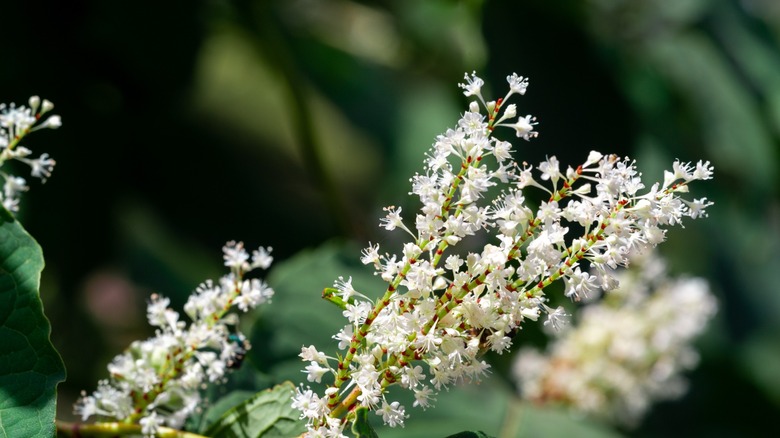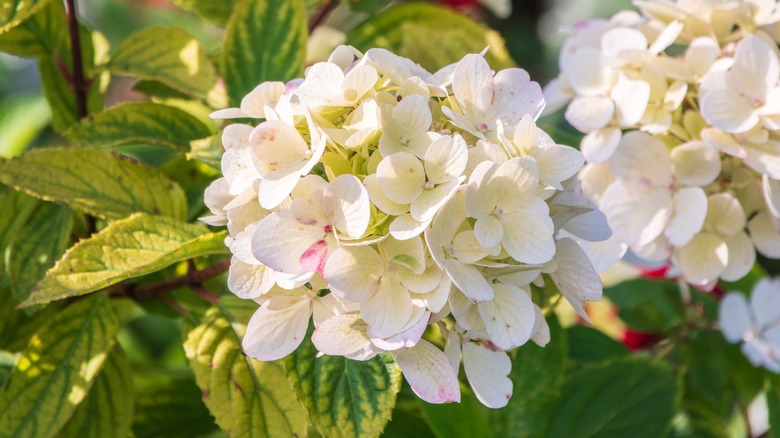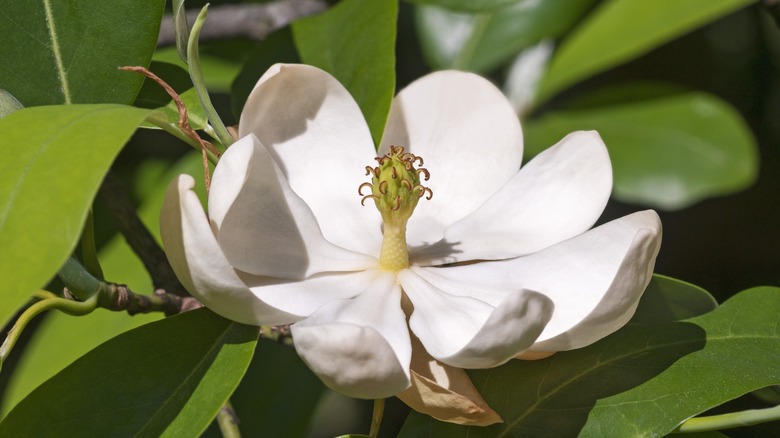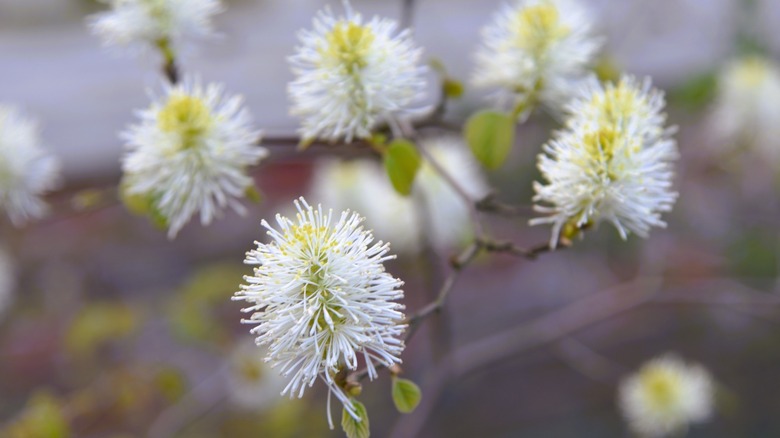16 Plants To Replace Invasive Honeysuckle With For A Garden That's Easier To Maintain
Honeysuckle is a wonderful plant, no doubt about it. It smells lovely, attracts bees, hummingbirds, and butterflies, and best of all, it's low maintenance. However, not every variety belongs in your garden. One variety in particular you don't want taking root in your yard is Japanese honeysuckle (Lonicera japonica). At first glance, it looks just as charming. But don't let that fool you. This vine grows fast, spreads wide, and forms dense mats that choke out nearby plants. And once it settles in, it becomes relentless.
Before long, it can take over more space than you intended to give it. That said, if you already have some honeysuckle growing in your yard, there's no need to panic. The first step is to figure out if your honeysuckle is native or invasive. If the plant has hairy, egg-shaped leaves, hollow stems, and a tangled, sprawling growth habit, there's a good chance it's a Japanese honeysuckle. It's listed as invasive in almost all states along the Eastern Seaboard and in the Midwest; growing it there poses a threat to local ecosystems. Elsewhere, you should still think twice about letting this aggressive plant grow and spread, and removing it is your best option.
Now, that doesn't mean you have to leave that patch empty. There are plenty of beautiful, non-invasive plants that can take its place. In fact, some gardeners would argue that many of these alternatives are far more striking and just as low maintenance. From winterberry holly that adds a pop of Christmas cheer with its bright red berries to the fragrant summersweet, here are some alternative vines and shrubs worth exploring. And if it's that signature honeysuckle charm you're after, don't worry, we've also included a native honeysuckle variety that's safe to grow.
Coral honeysuckle
Coral honeysuckle (Lonicera sempervirens) is the right kind of honeysuckle for your garden. As a native plant, it grows in a way that supports your local ecosystem. It produces vivid red, tubular flowers that are such magnets for hummingbirds that some gardeners call it the "hummingbird vine." Those blooms are just as attractive to bees, butterflies, and moths. As they mature into small berries, they become a source of food for songbirds through late summer and fall. This non-invasive honeysuckle is pretty low maintenance and grows in almost any soil, making it a great choice for gardens in zones 4 to 9.
Lilac
If your favorite thing about honeysuckle is its scent, then common lilac (Syringa vulgaris) is a natural swap. In fact, its fragrance is so iconic that perfumers have spent centuries trying to bottle it. Come mid- to late spring, mature lilacs put on a generous show of purple or white flower panicles that are magnets for butterflies and bees. Lilacs prefer full sun and well-drained, alkaline soil, and they thrive in USDA zones 3 through 7. While they're not the most ideal flowers for hot, humid regions, they're exceptionally cold hardy and drought tolerant once established.
Carolina jessamine
Now, if you're more interested in a honeysuckle-alternative that can handle some heat (it's hardy in zones 7 to 10), Carolina jessamine (Gelsemium sempervirens) is hard to beat. Also known as yellow jessamine or evening trumpetflower, it delivers exactly what those names suggest: sunny yellow, trumpet-shaped blooms with a sweet fragrance. You can let it climb a trellis or trail it as a ground cover. Either way, it's pretty low maintenance once established. Just note that while it's stunning, every part of it is highly toxic. So, you may have to reconsider this one if you have little ones or pets around.
Carolina rose
Carolina rose (Rosa carolina) is another beautifully fragrant honeysuckle alternative, perfect if you want a splash of pink in your garden. It forms small thickets, about 2 to 5 feet tall, that produce five-petaled blooms that draw in pollinators. More particularly, it serves as a host for Polyphemus moths. As the petals fall, bright red rose hips take their place. Think of them as nature's candy for songbirds. They're also great for homemade tea or jelly. What's even more interesting is its ability to tolerate dry, moist, or even alkaline soil, and stay resilient throughout zones 4 through 9.
American wisteria
American wisteria (Wisteria frutescens) is one of those climbing plants that makes you feel like you're living in a fairytale. It's a good choice for gardeners in zones 5 through 9 who have pergolas, arbors, or gateway arches they'd like to adorn. Once settled, it handles heat, drought, and even compacted soils with ease, performing best in full sun to partial shade. Beyond its beauty and resilience, American wisteria is beneficial to the soil, thanks to its ability to fix nitrogen. Although less aggressive than its non-native counterparts, American wisteria's growth should be controlled with regular pruning (which also encourages blooming).
Arrowwood viburnum
Arrowwood viburnum (Viburnum dentatum) is an attractive and functional alternative to invasive honeysuckle — one that works as an all-season star across zones 2 to 8. Each spring, it bursts into gorgeous flower clusters that attract native pollinators, much like honeysuckle. As summer shifts to fall, these blooms give way to blue-black berries that songbirds can feed on. By then, even the leaves put on a show, shifting into shades of yellow, red, and burgundy. It thrives in full sun or part shade, can adapt to most soil types, and even withstand occasional drought or flooding.
New Jersey tea
The dried leaves of New Jersey tea (Ceanothus americanus) were once a popular caffeine-free tea substitute. Today, it's more useful as an eco-friendly alternative to invasive honeysuckle. For starters, it thrives in dry, well-drained soils, which means you won't be dragging a hose to it every week. It's hardy in zones 4 to 8 and loves full sun, though it can handle light shade too. At just 3 to 4 feet tall, it's a manageable size for small gardens or borders. And when it blooms, usually in early summer, it produces fluffy white flower clusters that attract pollinators.
Maypop
Maypop (Passiflora incarnata) is one of the few passionflower species native to the U.S. and one of the most cold hardy. It thrives in zones 5 to 9 and handles a variety of soils, as long as they're well-drained. Once it's settled, you'll find that it's resilient to drought, deer, and even poor soils. That alone makes it a good honeysuckle substitute. But its biggest draw is the flowers. The intricate purple blooms, which appear from spring to summer, are beautiful magnets for hummingbirds. After flowering, they produce egg-sized fruits that are edible and mildly tropical in flavor.
Virginia sweetspire
Virginia sweetspire (Itea virginica) thrives in roughly the same climate as the invasive honeysuckle, with a hardiness range of 5 to 9. In early summer, it produces branches of fragrant flowers that persist for weeks. As the season changes, its green foliage turns vibrant shades of red, orange, and purple, especially when planted in a spot with plenty of sun. This shrub typically grows up to 8 feet tall and 6 feet wide. While it tends to form dense colonies, that quality actually makes it a useful plant for controlling soil erosion or filling in low-lying areas. Occasional trimming will keep your sweetspire compact and tidy.
Black chokeberry
Black chokeberry (Aronia melanocarpa) produces white flowers that serve as a beautiful alternative to honeysuckle's blooms. It's best suited for zones 3 through 8. The black comes from the berries that appear after the flowers. These are so rich in antioxidants they're often harvested for jams, syrups, and juices. However, in your garden, the birds will probably get to them first. If you do manage to harvest some berries, let them dry first because they're pretty tart when fresh and you might actually choke, just as the name suggests.
Winterberry holly
Looking for a honeysuckle alternative that adds visual interest year-round? Winterberry holly (Ilex verticillata) is a native, slow-growing shrub that flowers with golden, white, or yellow, showy blooms in the spring. In late summer, the plant becomes adorned with bright red berries that last well into winter. To get that signature display, you'll need at least one male plant nearby to pollinate the females. It does best in moist to even boggy soils. Once established, it's surprisingly tolerant of drier conditions too. It's hardy in USDA zones 3 to 9 and can grow in full sun to part shade. More sunlight means more berries.
Old man's beard
If you love how honeysuckle vines climb and fill vertical space, try old man's beard (Clematis virginiana). It offers the same effect without throwing your garden off balance. Plus, it's especially useful if you're trying to build a living fence that draws in birds and pollinators. Although it doesn't begin flowering until mid-summer, this native clematis (hardy in zones 3 through 9) makes up for the wait with a profusion of small, fragrant white blooms. And when they begin fading, they're replaced by fluffy seed heads that look like the beard of an old man.
Summersweet
Summersweet (Clethra alnifolia) comes with vertical spikes of either white or soft pink flowers, each one carrying a sweet scent that's impossible to miss. In the wild, you'll find it along streams and in damp woodland edges, which explains why it's so comfortable in wet or poorly drained soil. But don't think that means it's fussy. It adapts well to typical garden beds as long as they're not dry. Hardy in zones 3 through 9, it's happy in both full sun and partial shade, but will bloom just as well even in full shade.
Smooth hydrangea
Smooth hydrangea (Hydrangea arborescens) is another showy flower, hardy from zones 3 through 9, that you can count on to brighten the shady corners of your garden. What makes it an even more appealing honeysuckle alternative is how forgiving it is. If you cut it back hard in late winter, even right to the ground, it will come back strong with fresh growth because it flowers on new wood. That resilience extends to its growing conditions, too. It's one of those plants that are happy in clay, sand, loam, or slightly damp soil, as long as the spot drains well.
Sweetbay magnolia
You can grow sweetbay magnolia (Magnolia virginiana) as either a shrub or a tree, depending on your space and preference. Whichever form you choose, you'll appreciate that this plant loves damp soil but won't take over your yard. As a tree, it can reach up to 60 feet tall, while as a shrub, it may stay as short as 10 feet. Sweetbay magnolia produces creamy white flowers with a lemony scent. It's hardy in zones 5 through 10 and feels right at home in rain gardens, along pond edges, or anywhere the soil stays consistently moist.
Dwarf fothergilla
If the idea of a tree stretching 60 feet feels a little much, you might prefer to go with one of the best flowering shrubs for a small yard instead: Dwarf fothergilla (Fothergilla gardenii). Topping out at just 3 to 4 feet in height and width, it's perfectly scaled for tight spaces in zones 5 through 8. In early spring, before the leaves even appear, clusters of fragrant, bottlebrush-like blooms appear. Since there are no petals here, the appeal comes from its cream-colored stamens, which release a honey scent that pulls in bees and other pollinators.
